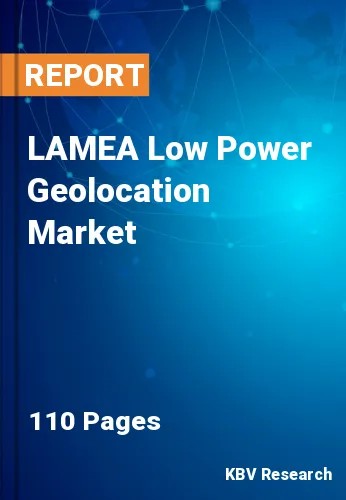The Latin America, Middle East and Africa Low Power Geolocation Market would witness market growth of 29.4% CAGR during the forecast period (2021-2027).
Geolocation has become a crucial part of people’s lives and the regular operations of many companies. There are many industries that are using geolocation for their benefits along with enhancing customers’ online experience. For example, a global company can use geolocation technology to redirect all visitors of a country through country-specific pages. In the tourism sector, companies can showcase location-based content based on the location of website visitors in a specific city.
With the adoption of low power geolocation, companies can improve and better control internet commerce to set up virtual boundaries and de facto controls activities like video distribution, internet gambling, and procurement of products & services, which can be restricted in a specific jurisdiction but don’t have any legalities in another.
Several nations across this region are adopting low power geolocation technologies and solutions to improve their IT infrastructure and carry out various smart city projects. The government of Dubai is updating and unifying the geolocation map for Dubai, which helps them to plan design, and manage numerous development projects in the future.
Security and safety of data as well as individuals is among the key concerns for governments of various nations in the Middle East. Along with that, the rise in the cases of location data misuse is increasing the concerns of the authorities, leading to the formation of stringent policies and laws to prevent such ill activities and protect the location data of individuals, companies, and government authorities.
The Brazil market dominated the LAMEA Low Power Geolocation Market by Country 2020, and would continue to be a dominant market till 2027; thereby, achieving a market value of $2.31 billion by 2027. The Argentina market is estimated to witness a CAGR of 30.1% during (2021 - 2027). Additionally, The UAE market would exhibit a CAGR of 29.1% during (2021 - 2027).
Based on Geolocation Area, the market is segmented into Indoor and Outdoor. Based on Technology, the market is segmented into LPWAN, GPS, UWB, Wi-Fi, Bluetooth and Others. Based on Solutions, the market is segmented into Hardware, Software and Service. Based on End User, the market is segmented into Logistics & Transportation, Healthcare, Consumer Electronics, Agriculture, Power Utilities and Others. Based on countries, the market is segmented into Brazil, Argentina, UAE, Saudi Arabia, South Africa, Nigeria, and Rest of LAMEA.
Free Valuable Insights: The Global Low Power Geolocation Market is Predict to reach $100.43 billion by 2027, at a CAGR of 25.4%
The market research report covers the analysis of key stake holders of the market. Key companies profiled in the report include Digital Matter, Favendo GmbH, Semtech Corporation, Cisco Systems, Inc., Hoopo Systems Ltd., STMicroelectronics N.V., Kerlink SA, Nestwave SAS, Sigfox S.A. (Citymesh), and Tracktio.
By Geolocation Area
By Technology
By Solutions
By End User
By Country
Our team of dedicated experts can provide you with attractive expansion opportunities for your business.

